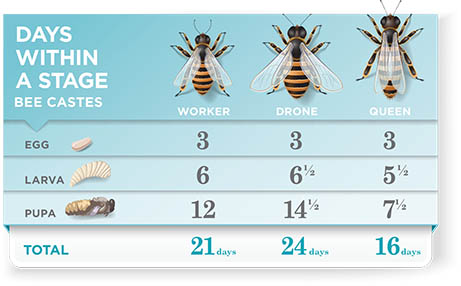
Artificial illumination is prevalent in contemporary society and has a significant impact on our everyday routines. However, recent studies from UC San Diego indicate that it presents a considerable danger—not only to humans but also to insects, particularly honey bees. Just as screen usage affects human slumber, persistent exposure to artificial light greatly disturbs the sleep patterns of honey bees. This discovery could have severe consequences for bee health, pollination activities, and even the stability of ecosystems.
### The Essential Role of Honey Bees
Honey bees (Apis mellifera) are well-known not only for their honey production but, more importantly, for their crucial role as pollinators. Approximately one-third of the foods we consume, including fruits, vegetables, and nuts, rely on pollination by bees and other organisms. Pollination is not only vital for human agricultural practices—it is also essential for the survival of wild flora, which in turn sustains entire ecosystems.
Given their critical importance, it is vital to comprehend the elements affecting bee health. Environmental pressures such as habitat loss, pesticide application, and climate change have already been studied extensively. Now, UC San Diego’s pioneering discoveries regarding artificial light pollution introduce further concern, as it endangers the very rest periods that bees require to operate efficiently.
—
### The Research: Effects of Light on Bee Sleep Cycles
Researchers from UC San Diego dedicated several years to examining the influence of artificial light on honey bee sleep. Under the leadership of Ashley Kim, the study sought to explore how nighttime exposure to artificial light (a rising trend due to urban growth) impacts the sleep cycles and behaviors of bees.
#### Experimental Approach:
The investigation involved placing bees in controlled lab settings with continual exposure to artificial light, while another group of bees experienced natural darkness for comparative purposes. Researchers monitored the bees over 24-hour cycles, using video recordings to document both individual and group behaviors.
Even prior to an exhaustive data analysis, the effects of light were clearly noticeable.
“Even without delving into the data, it was evident that something was occurring… the bees under incessant light exhibited less sleep,” stated Ashley Kim. Bees subjected to constant light looked noticeably agitated, seeking out shaded spots and showing reduced sleep durations. They were also more frequently disrupted by other bees, highlighting increased unrest within the hive.
—
### Circadian Rhythms and the Dangers of Sleep Loss
Similar to humans, bees possess circadian rhythms—innate, internal mechanisms that govern their sleep-wake cycles over a 24-hour frame. When these rhythms are interrupted, the repercussions can be substantial.
Sleep serves critical functions for bees. Insufficient sleep not only hampers their rest but also leads to diminished neural performance and behavior. Bees utilize sleep to enhance their efficiency in complex tasks such as foraging and communication.
This disruption in circadian rhythms has tangible consequences not only for individual bees but also for the entire colony. James Nieh, a professor involved in the research, stressed the widespread nature of the problem. “Light pollution is becoming increasingly problematic, with artificial light currently illuminating a quarter of the Earth’s surface, and this study highlights how such disturbances may be detrimental to pollinators.”
The pervasive nature of artificial light could contribute to the worldwide decline in bee populations and significantly disrupt the balance of biodiversity.
—
### Consequences: Effects on Bee Communication and Colony Well-being
Although insufficient sleep may appear negligible at first glance, it reverberates through several facets of bee life and colony operations. One of the essential behaviors influenced by sleep deprivation is the “waggle dance.”
The waggle dance is a complex communication method utilized by honey bees, allowing them to indicate food sources to fellow colony members. Whether conveying the distance or direction to a food supply, this social behavior is vital for efficient resource acquisition.
However, bees lacking adequate sleep face challenges in performing or understanding these dances correctly. This impairment can result in foraging inefficiencies, decreased food gathering, and a weakened colony overall. Since bees are responsible for pollinating a considerable portion of crops and plants, even slight disruptions in their activities could lead to significant losses in agricultural output and biodiversity.
—
### Light Pollution: A Global Environmental Challenge
A major conclusion from UC San Diego’s study is the alarming fact that artificial light currently covers a vast 25% of the Earth’s surface. As the global population increases, urban regions expand, bringing with them more light pollution. In many densely populated locations, true darkness is rarely, if ever, encountered.
While artificial light simplifies nighttime activities for humans, it disrupts the natural behaviors of numerous species, including honey bees. Although many have concentrated on threats like pesticide exposure and climate change as prominent stressors for bees, light pollution subtly adds another layer of complexity.
With climate change further compelling bees to forage longer outside their hives—especially in the evening—this results in greater overlap between bee activities and artificial lighting.